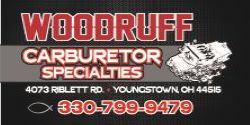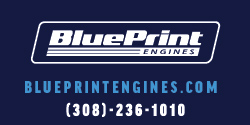nitro_rat
Well-Known Member
I'm tossing together a cheap 440 for my '73 Power Wagon. I'm starting with a '77 cast crank core. It's going .020" over with silvolite 1263 pistons (stock replacement for the '71 and earlier engines). This will get the compression up a little from the dismal 7.5:1 or whatever it originally had. Close to 9:1 from the numbers I ran. Cam is a Melling MTD2 "RV" cam. I have a double roller timing set with the adjustable 3 keyway setup. I have a stock '70 4 barrel intake for it and it will likely be getting a fresh Edelbrock AVS2 800. Stock truck exhaust manifolds. Stock 452 heads, may cut them .020" and run composite head gaskets, otherwise I'll put steel shim ones in.
I am wondering if I should make the effort to degree the cam, just install it "straight up", or plug it in 4 degrees advanced. I'm leaning towards just tossing it in straight up.
Secondly, looking at the specs, the cam is actually a little smaller on the intake side than the "stock replacement" SPD11 cam. The MTD2 recommends a VS430 valve spring. Is it necessary? Maybe better to run the stockers on the intake and the VS430 on the exhaust? Break it in on all stockers and swap in the VS430's after break in? Swap them in only on the exhaust? I don't want to be harder on the lifters than necessary or build any extra heat if I don't need to.
I'm putting this thing together with bargain basement parts that I already have so I'm not changing pistons, cam, etc. Just wondering if it's going to make any measurable difference to go above and beyond on what is basically a stock budget rebuild?
Truck is mainly a highway cruiser; about 5,200 lbs, 33's, 3.55 gears, currently 727 auto but will probably be swapping to a manual transmission eventually.
I am wondering if I should make the effort to degree the cam, just install it "straight up", or plug it in 4 degrees advanced. I'm leaning towards just tossing it in straight up.
Secondly, looking at the specs, the cam is actually a little smaller on the intake side than the "stock replacement" SPD11 cam. The MTD2 recommends a VS430 valve spring. Is it necessary? Maybe better to run the stockers on the intake and the VS430 on the exhaust? Break it in on all stockers and swap in the VS430's after break in? Swap them in only on the exhaust? I don't want to be harder on the lifters than necessary or build any extra heat if I don't need to.
I'm putting this thing together with bargain basement parts that I already have so I'm not changing pistons, cam, etc. Just wondering if it's going to make any measurable difference to go above and beyond on what is basically a stock budget rebuild?
Truck is mainly a highway cruiser; about 5,200 lbs, 33's, 3.55 gears, currently 727 auto but will probably be swapping to a manual transmission eventually.
Last edited:
















